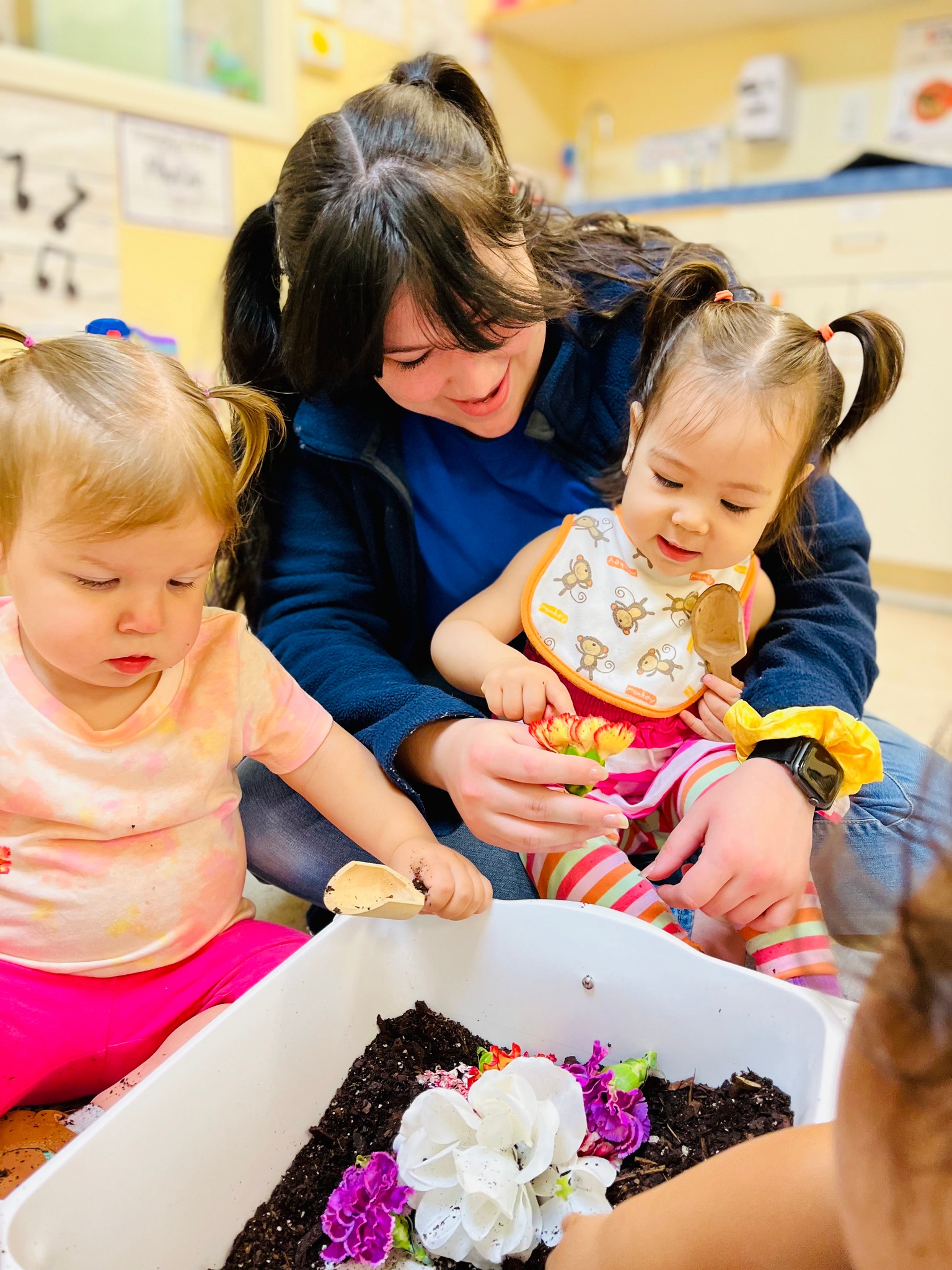Parents want their child to be loved and cherished when left with a caregiver away from home.
Selecting a preschool can be very confusing. How can a parent know which childcare program will truly maintain small groups and low child to teacher ratios to nurture the child and give individual attention.
Parents should be aware of group sizes and ratios as they shop preschools. Texas state mandated minimum standards for group sizes and ratios in all age groups are much too large. In Texas, for example, a two-year-old class can have as many as 11 children with 1 teacher or 22 with 2 teachers.
Bluebonnet has much smaller group sizes and ratios. Our two year old classes have a 6 to 1 ratio or a 12 to 2 for example.
Individualized attention and one-on-one interaction can occur effectively only when the group size is small. Children have more opportunities to express themselves and the teacher can listen intensely and give feedback to each child. This boosts learning and enhances language development. Studies have shown that a critical component of quality care rests in the relationship between the child and teacher and the ability of the adult to be responsive to the child.
Choose an NAEYC accredited preschool. The National Association for the Education of Young Children sets guidelines which dictate small group sizes.
Bluebonnet meets these NAEYC recommended group sizes and ratios and exceeds them in several programs. Bluebonnet teachers will regularly split their already small class into still smaller groups for special instruction or book reading time.
Bluebonnet School of Cedar Park has been NAEYC accredited since 2004. Read more about Bluebonnet’s awards and accreditations
